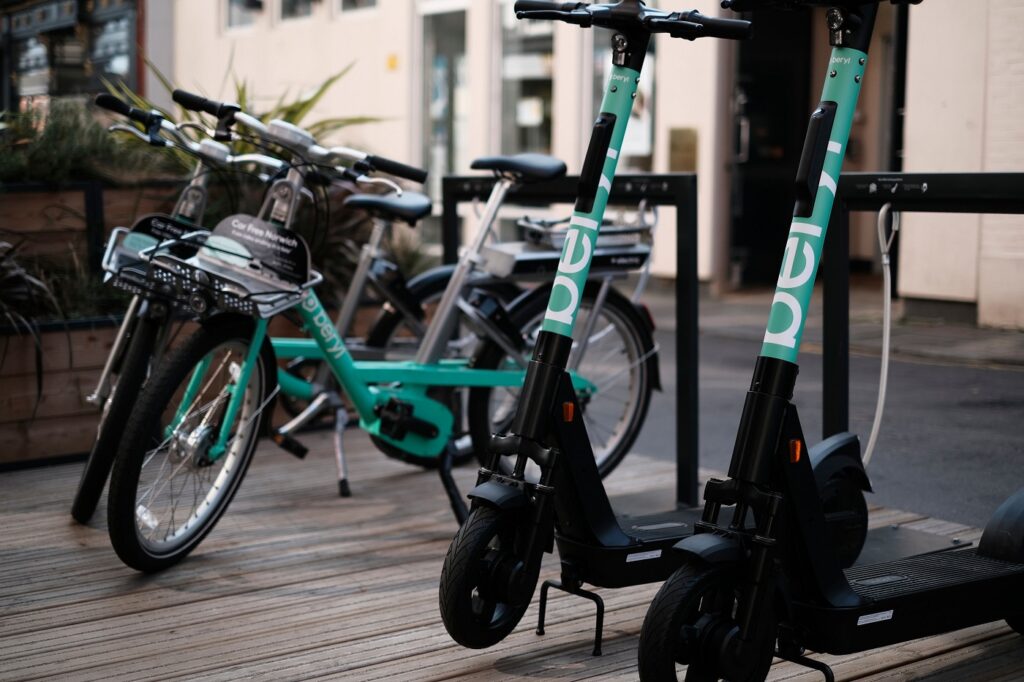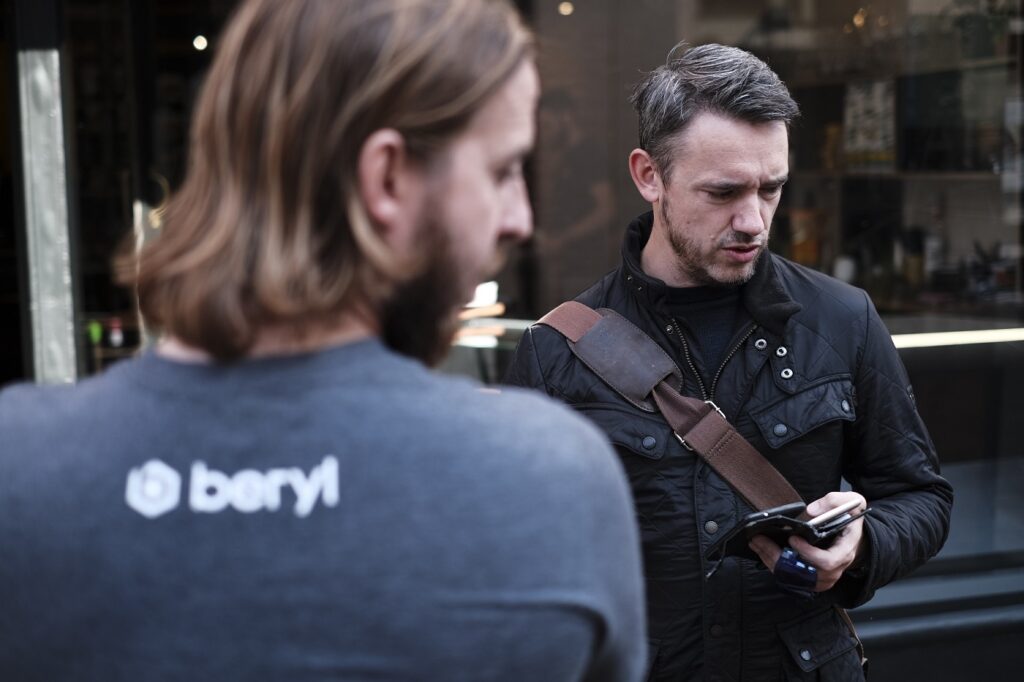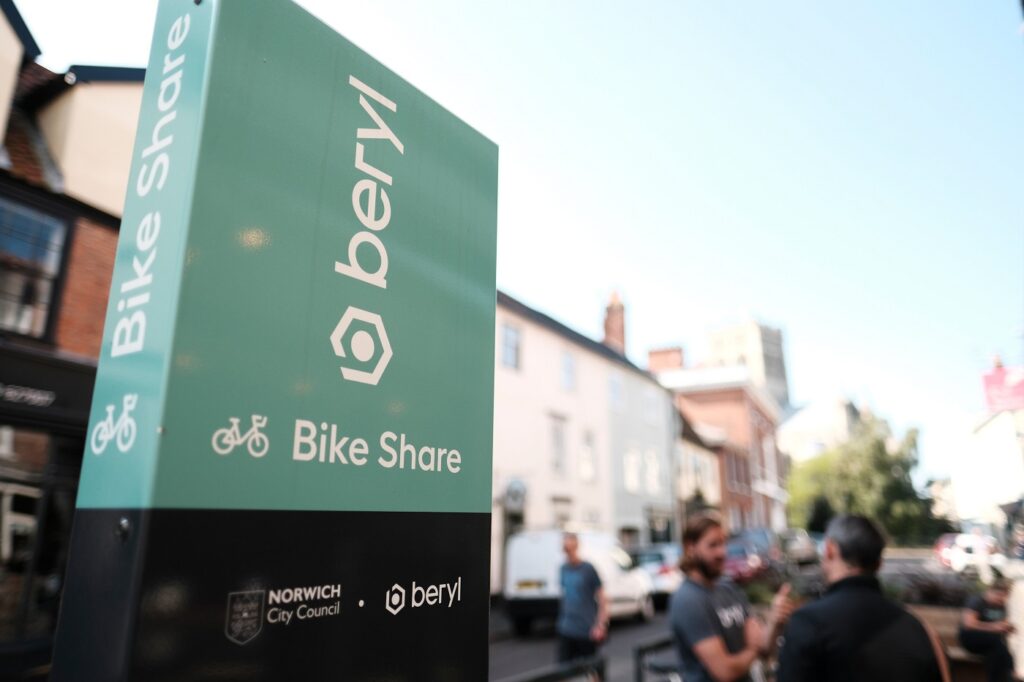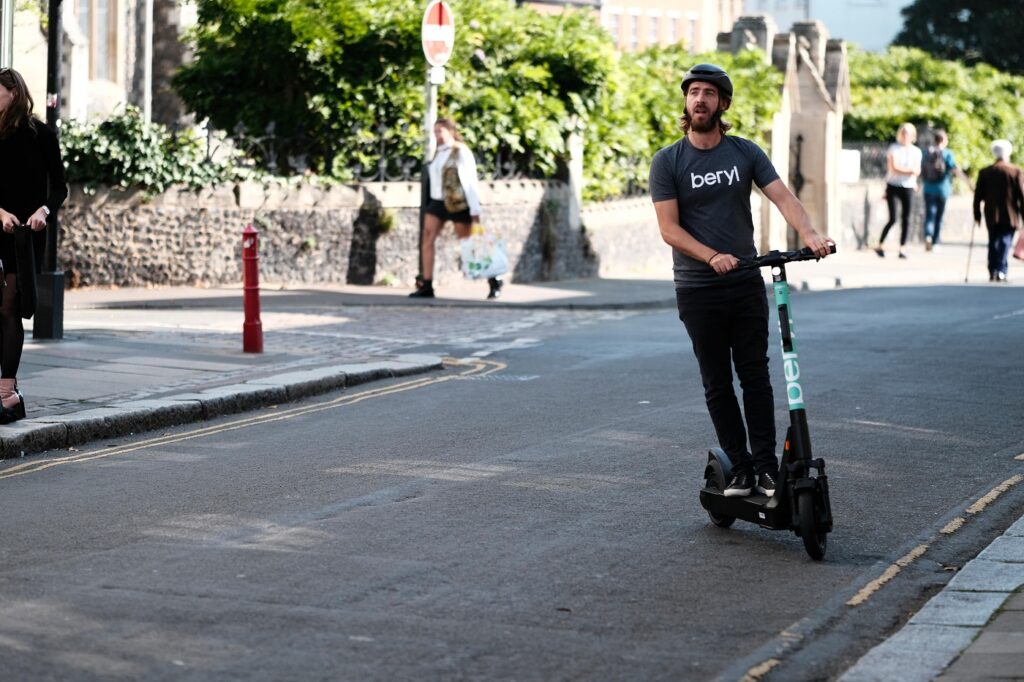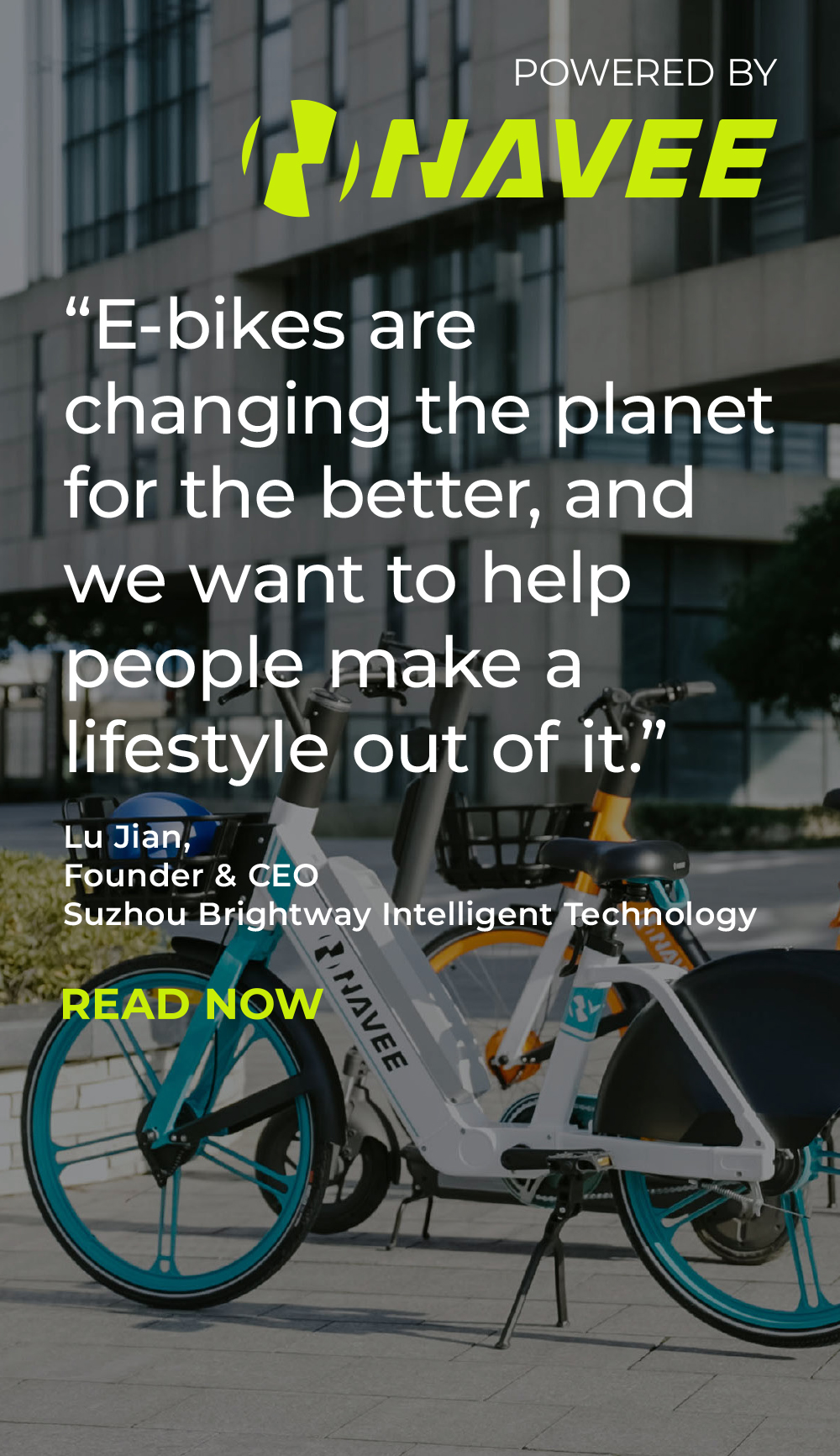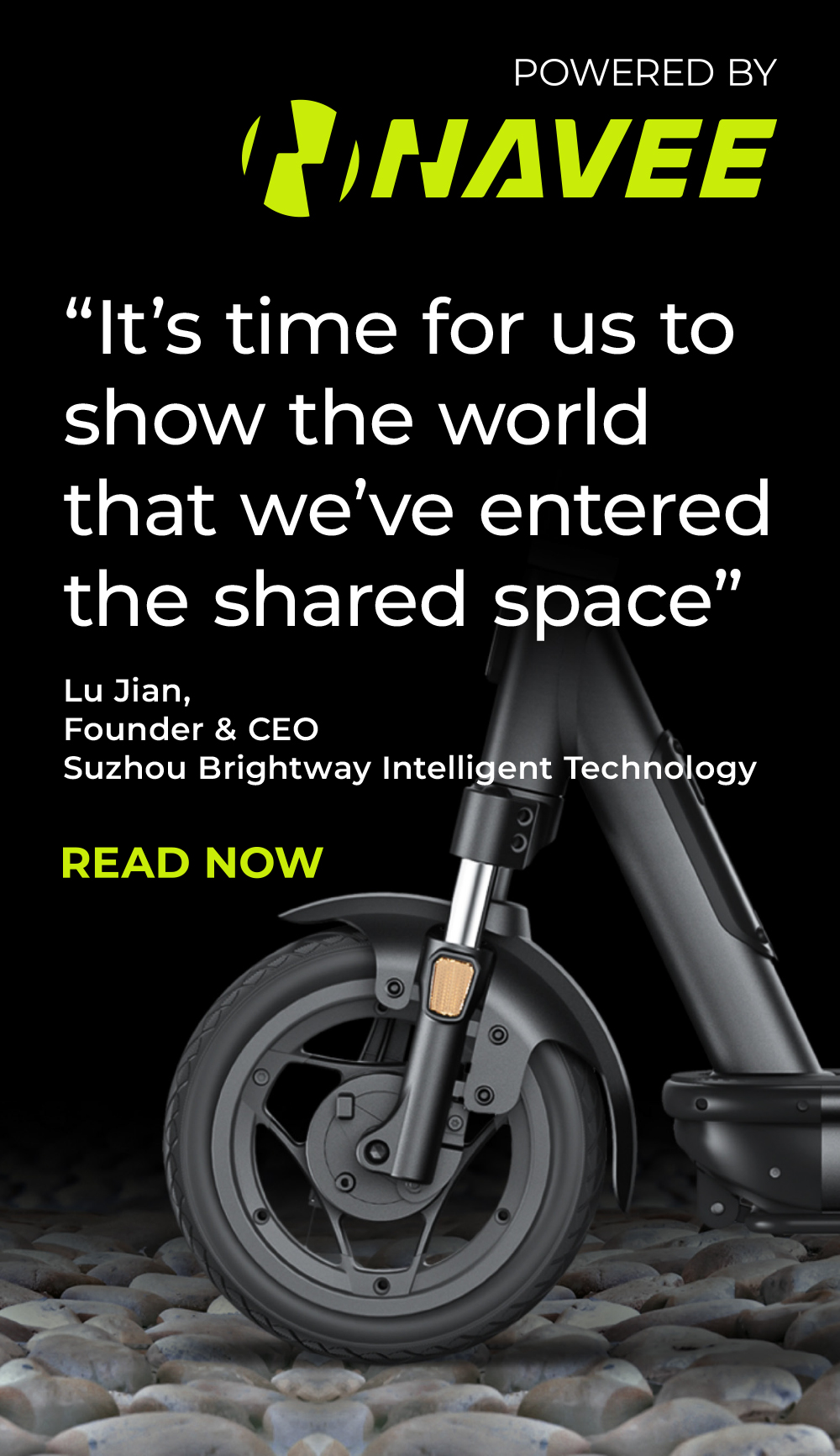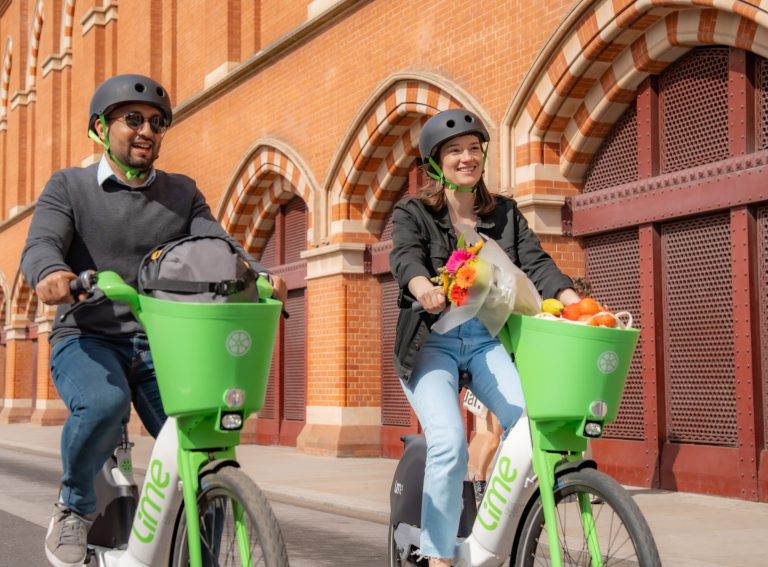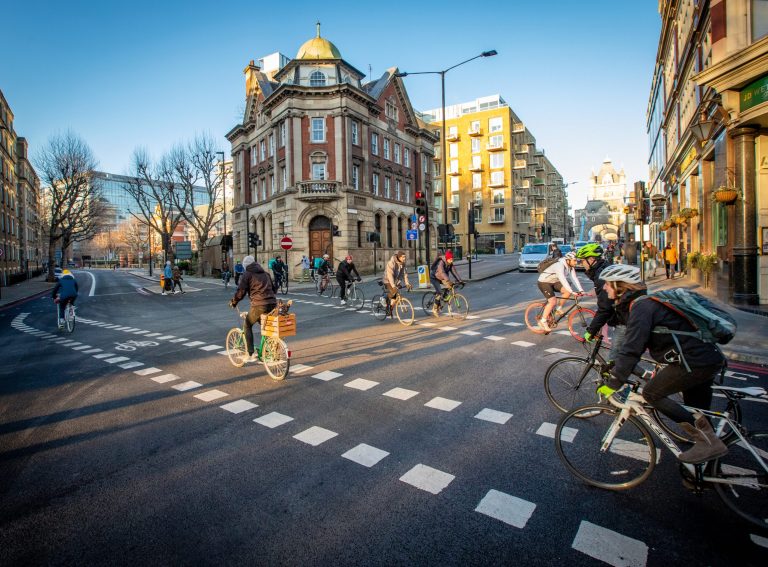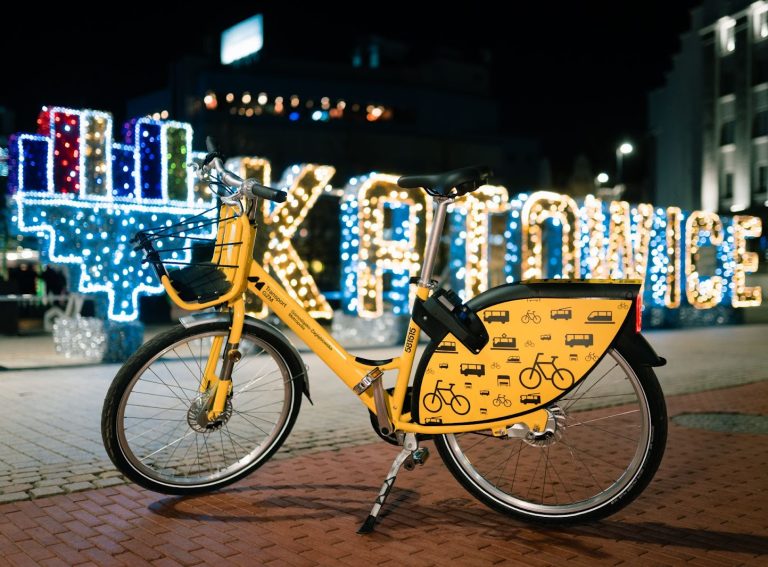Norwich is not overselling itself when it proclaims itself A Fine City. Picturesque narrow, cobbled streets with more ups and downs than cryptocurrency run through the place; they pose a tough test to any vehicle, never mind small, lightweight devices like electric scooters. But that’s what we pitched up in Norwich today to try out: the Beryl e-scooter.
Beryl’s quaintly-turquoise bicycles and e-bikes are already a common sight around the city. From today, however, the British company has a new vehicle for eager Norfolkians to select.
“We’re trying to make the usage and communications as simple as possible: use the e-scooters the same as you would a bike. You wouldn’t ride a bike on a pavement and so you can’t ride a scooter on a pavement.
Phil ellis, beryl
Beryl chief Phil Ellis is very proud of this multimodal transport solution. “We’ve had a bike-share system in Norwich for months,” he told Zag at today’s media launch, “and what this means is Norwich is now a bike, e-bike and electric scooter system: the first time a city has had a single operator offering all three.”
The nippy scooters have been added as part of the DfT-sanctioned trials, in partnership with Norfolk County Council, the local authority responsible for Norwich’s roads.
“The initial pedal and e-bike scheme was brought to the city by the Transport for Norwich partnership, which is a partnership between the city, county council and neighbouring authorities, and funded through the Department for Transport’s Transforming Cities fund,” Chris Andrews of Norfolk County Council’s infrastructure delivery team, pointed out.
Based on the Okai ES400, the Beryl e-scooter has the usual DfT-mandated features, including two brakes, a bell and lights, and adds front suspension and a comfortably wide deck to the mix. Top speed is limited to 12.5mph (three short of the DfT-imposed limit). You’ll need it, as Norwich offers a large area to roam, granting e-scooters the same service area as Beryl’s bikes.
The scooters will cost £1.50 to unlock and 10p/min to ride, identical to Beryl’s e-bikes. Both are pricier options than the company’s standard shared bikes, which are £1 to unlock and 5p/min to ride. Bundles are available to purchase for blocks of time, although they don’t appear to introduce significant discounts, if any at all.
The Beryl hub system is based around pretty bays, where there’s space to park the new e-scooters alongside Beryl’s bikes and e-bikes. Want to park outside one of the bays? That’ll be £5. Oh, and £10 if you leave the service area.
Expanding upon a successful, existing system is a move that Beryl hopes will make the introduction of e-scooters a smooth process.
“By choosing Norwich, we’re starting with a lot of our questions already answered,” Ellis advised. “With our existing bikes and e-bikes, we have a network of bays already located throughout the city, geofenced and with some physical infrastructure. We’ve had our operations team here, we’ve got our battery swapping teams set up, and we’ve got great relationships with local businesses and the council.”
A cargo bike-riding service team already swaps out the batteries of Beryl e-bikes, so looking after scooter batteries will be straightforward. Beryl isn’t stopping there, however. “We will probably be looking to get some on-street charging implemented over the course of the winter,” Ellis revealed.
The current service area gives the e-scooter users an apparent free rein to go anywhere, with no geofencing around parks or roads. We asked Ellis why it’s so open, particularly in light of lurid headlines elsewhere in the country.
“Part of the trial is offering people the choice of vehicle: some might prefer a bike, some might prefer a scooter,” he said. “We’re trying to make the usage and communications as simple as possible: use the e-scooters the same as you would a bike. For example, you wouldn’t ride a bike on a pavement and so you can’t ride a scooter on a pavement. You can’t ride a bike inside someone’s house so you can’t ride a scooter inside someone’s house!
“That’s our starting point with the council. If we feel that isn’t controlling behaviours sufficiently and we want to implement slightly more Draconian methods – speed restrictions, cutting the power, higher fees if you leave a scooter out of bay versus in the bay – then we can, and we will implement that during the course of the trial if we think it’s a good idea, if the council think it’s a good idea, or if the DfT think it’s a good idea.”
“Safety will be of paramount importance, which is why we are introducing the scooters gradually, in a controlled manner,” said Martin Wilby, Norfolk County Council’s cabinet member for highways and infrastructure. “We’ve already put a number of measures in place and will be working closely with the police and key local stakeholders to ensure their use is appropriate.”
This first day sees 10 to 20 scooters on the streets; the goal is to introduce around 100 over the next few months.
“If it goes well,” Ellis said, “we can go way beyond that number if we needed to. We don’t yet know whether, in a city like Norwich, you should have, say, 500 e-scooters and 100 bikes, or maybe the other way round. Really, that’s what we’re trying to learn. We can roll that out quite quickly.
“There’s a whole new cohort of supporting organisations such as technology companies coming up with innovative AI-powered redistribution models for free-floating things – that’s existed in the docked world for years. We’re going to trial some of those things. How can we make it something that is enjoyed and used? That’s what we’re learning, and we’ll be looking to launch in other places in the UK over the course of the trial too.”
Norwich’s focus on the things that really matter – tackling air pollution and road fatalities – will make it A Fine City indeed and is a credit to the local leadership. As Ellis put it: “We’re working with a local authority which has ambitious, well-organised plans for investing in the city to improve quality of life, liveability and implement sustainable travel initiatives.”
This clear, unapologetic vision to cut carbon and boost air quality will go a long way to viewing the forthcoming trial with the right perspective. Said Wilby: “I am delighted to see the first e-scooters arrive on the streets of Norwich, bringing further sustainable transport options to an even wider range of people and supporting our shared aims to reduce pollution and congestion across the city.”
Our take
Norwich has taken an imaginative and grown-up approach to its e-scooter trial and is concentrating on the Big Issues that micromobility is here to solve: the climate crisis, children being killed on our roads, and the way car culture divides society.
Having a single operator removes inter-company variables from the results. Norwich becomes purely a bike vs e-bike vs e-scooter comparison, with the caveat that pricing will play a part. Let’s see how many of each they’ll have by this time next year.
And while Beryl may be new to scooters, the operator is not new to micromobility. As an accessory manufacturer (the firm was originally called Blaze), the team worked with bike-share schemes in places like New York, Montreal and London, gathering deep understanding of how these schemes worked, what users expected, and how to collaborate with towns and cities.
In 2018, the company stepped up to become a bike-share operator and chose a new name. That name honours Beryl Burton, a successful road cyclist of the 1960s who was famous for beating her male counterparts.
We like the idea of forgoing micromanaging micromobility users, trusting that scooter users will learn as quickly as bike-share users what is and isn’t acceptable.
We’ll be watching Norwich with interest.
–
This article was updated on 23 September 2020 to include clarifications on the role of Norfolk County Council and its bike-share funding.

